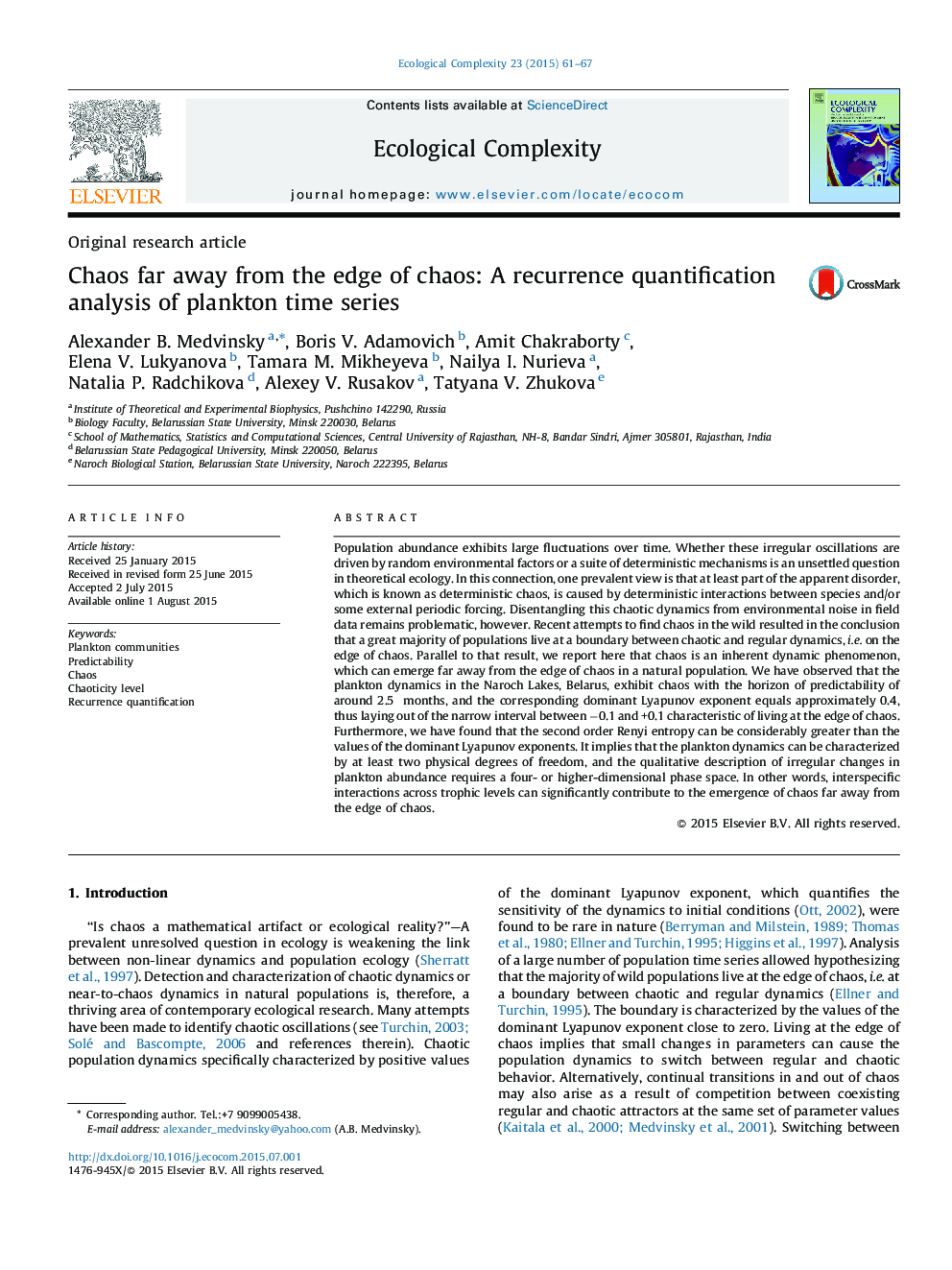| Article ID | Journal | Published Year | Pages | File Type |
|---|---|---|---|---|
| 6292495 | Ecological Complexity | 2015 | 7 Pages |
Abstract
Population abundance exhibits large fluctuations over time. Whether these irregular oscillations are driven by random environmental factors or a suite of deterministic mechanisms is an unsettled question in theoretical ecology. In this connection, one prevalent view is that at least part of the apparent disorder, which is known as deterministic chaos, is caused by deterministic interactions between species and/or some external periodic forcing. Disentangling this chaotic dynamics from environmental noise in field data remains problematic, however. Recent attempts to find chaos in the wild resulted in the conclusion that a great majority of populations live at a boundary between chaotic and regular dynamics, i.e. on the edge of chaos. Parallel to that result, we report here that chaos is an inherent dynamic phenomenon, which can emerge far away from the edge of chaos in a natural population. We have observed that the plankton dynamics in the Naroch Lakes, Belarus, exhibit chaos with the horizon of predictability of around 2.5 months, and the corresponding dominant Lyapunov exponent equals approximately 0.4, thus laying out of the narrow interval between â0.1 and +0.1 characteristic of living at the edge of chaos. Furthermore, we have found that the second order Renyi entropy can be considerably greater than the values of the dominant Lyapunov exponents. It implies that the plankton dynamics can be characterized by at least two physical degrees of freedom, and the qualitative description of irregular changes in plankton abundance requires a four- or higher-dimensional phase space. In other words, interspecific interactions across trophic levels can significantly contribute to the emergence of chaos far away from the edge of chaos.
Related Topics
Life Sciences
Agricultural and Biological Sciences
Ecology, Evolution, Behavior and Systematics
Authors
Alexander B. Medvinsky, Boris V. Adamovich, Amit Chakraborty, Elena V. Lukyanova, Tamara M. Mikheyeva, Nailya I. Nurieva, Natalia P. Radchikova, Alexey V. Rusakov, Tatyana V. Zhukova,
